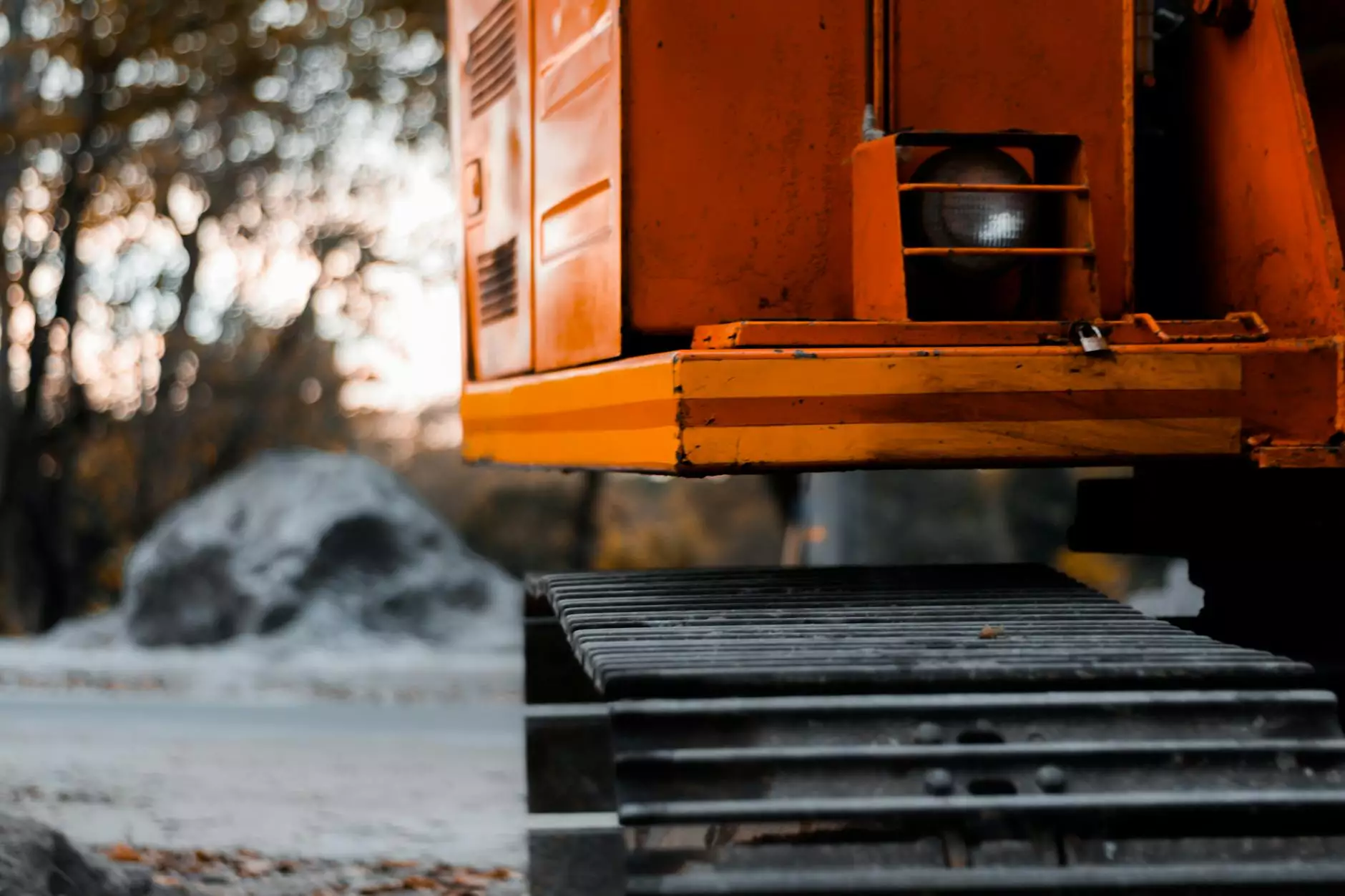Excavator Final Drives: The Heart of Your Machinery

Excavator final drives play a critical role in the functionality and efficiency of excavators, which are essential machines in the construction and heavy equipment industries. Understanding their importance, components, and maintenance can help you optimize your machinery and enhance productivity.
What Are Excavator Final Drives?
At its core, the excavator final drive is a system that transfers power from the excavator’s engine to its tracks or wheels. This system includes various components, including motors, gear reductions, and housings. The final drive is responsible for controlling the movement of the excavator and enabling it to maneuver effectively on different terrains.
The Importance of Excavator Final Drives
Final drives are pivotal for several reasons:
- Efficient Power Transfer: They ensure that the power generated by the engine is efficiently transferred to the tracks, optimizing fuel usage.
- Maneuverability: Without reliable final drives, excavators would struggle to move effectively, especially on uneven surfaces.
- Load Capacity: Well-functioning final drives contribute to the overall load capacity of the excavator, enabling it to handle heavier materials and perform more demanding tasks.
- Durability: High-quality final drives are designed to withstand the rigors of heavy machinery work, reducing wear and tear over time.
Components of Excavator Final Drives
The excavator final drive system consists of several critical components:
1. Hydraulic Motor
The hydraulic motor is responsible for converting hydraulic pressure into mechanical movement. This motor drives the gear system that ultimately powers the tracks.
2. Gear Reduction Unit
This component reduces the speed of the hydraulic motor while increasing its torque, allowing for powerful movement at lower speeds, which is essential for excavation work.
3. Track Drive Housing
The track drive housing protects the internal components and houses the gears and motors. Its construction is aimed at providing strength and reliability under heavy loads.
4. Planetary Gear System
This system disperses the load and allows for smooth operation, especially during turns and maneuvers. It is crucial for maintaining stability and control.
5. Brake System
Final drive systems often come equipped with integrated brakes, providing safety during operation and allowing for controlled stopping.
How Excavator Final Drives Work
The operation of the excavator final drive begins with the engine generating power. This power is transferred through hydraulic lines to the hydraulic motor. As hydraulic fluid enters the motor, it causes the motor to spin, driving the connected gear reduction unit.
This gear reduction unit decreases engine speed while increasing torque, which is essential for lifting and moving heavy loads. The movement then transfers through the planetary gear system and into the tracks, enabling the excavator to move forward, backward, or turn as needed.
Types of Excavator Final Drives
Various designs of excavator final drives cater to different model excavators and their functionalities:
- Single Speed: Commonly found in lighter excavators, providing a basic operation without complex features.
- Two-Speed: Offers versatility and is ideal for various applications, allowing operators to switch speeds based on the task at hand.
- High Torque: Engineered for larger excavators, providing maximum power for heavy-duty applications.
Maintenance of Excavator Final Drives
Regular maintenance of your excavator final drives is essential for maximizing their lifespan and ensuring efficient operation. Here are some critical maintenance tips:
1. Regular Inspections
Inspect the final drive for any signs of wear, leaks, or damage. Early detection can prevent costly repairs later.
2. Keep It Clean
Maintain cleanliness around the final drive. Dirt and debris can cause contaminants to enter the system, leading to premature wear.
3. Hydraulics Check
Regularly check the hydraulic fluid levels and the condition of hydraulic components. Low fluid levels can lead to insufficient power transfer and increased strain on the motor.
4. Lubrication
Ensure that all lubrication points are adequately serviced, as lubrication minimizes friction and wear between moving parts.
5. Monitor Performance
Keep an eye on the overall performance of the excavator. Noticing any unusual sounds or movements can be an early indicator of final drive issues.
Common Issues with Excavator Final Drives
Despite regular maintenance, excavator final drives can experience issues. Some common problems include:
- Hydraulic Leaks: Can lead to loss of power and efficiency.
- Worn Gears: Over time, gears can wear down, causing slippage and power loss.
- Alignment Issues: Misaligned components can lead to increased strain and potential failure.
Choosing the Right Final Drive for Your Excavator
Selecting the appropriate final drive is crucial for matching your excavator’s specifications and intended applications. Consider the following factors:
- Type of Excavator: Larger machines will require different drives compared to smaller models.
- Application: Heavy-duty applications necessitate higher torque drives.
- Brand Compatibility: Ensure that the final drive is compatible with your excavator brand for optimal performance.
Where to Purchase Excavator Final Drives
For reliable purchases, consider trusted suppliers such as Shop Hydraulic America. They provide high-quality final drives suited to various excavator brands and models, ensuring that you will find the perfect match for your machinery.
Conclusion
In summary, excavator final drives are vital components that ensure the efficient operation of excavators in various environments. Understanding their function, maintenance, and common issues can help extend the life of your machinery and improve overall performance. When it comes time to replace or purchase new final drives, look no further than reputable suppliers to ensure you’re investing in quality products that enhance your heavy equipment's capabilities.



